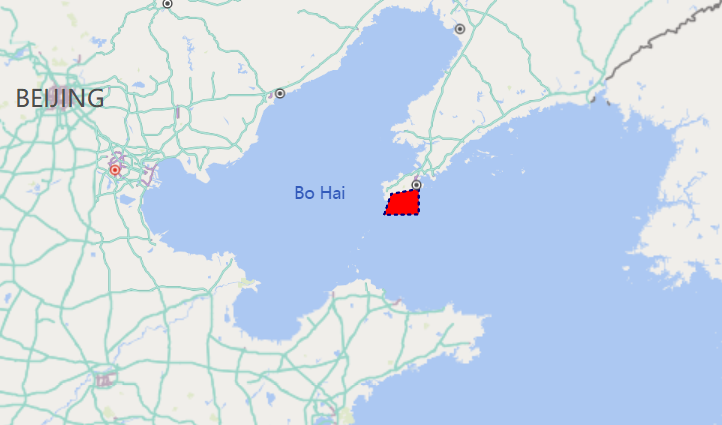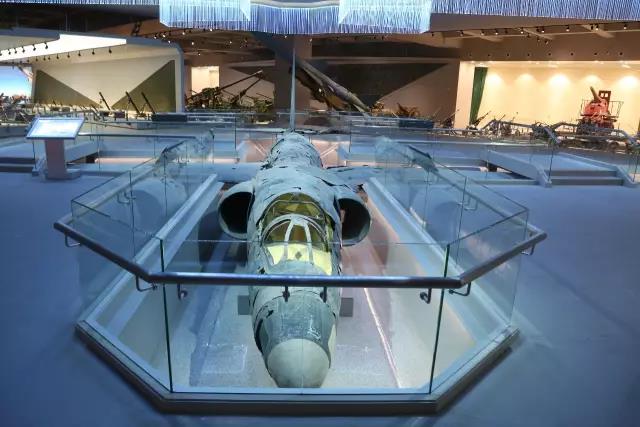During a recent Chinese live-fire drill believed to be conducted in the Bohai Bay area, a US U-2 reconnaissance aircraft flew into a previously declared no-fly zone. The zone had been previously declared, in concert with international norms, and China-US Rules of Behaviour for Safety of Air and Maritime Encounters. China’s Defence Ministry Spokesperson Wu Qian stated on Tuesday: “It was an act of naked provocation, and China is resolutely opposed to it.”[1] Historically, US related U-2 reconnaissance activities over Chinese territory have resulted in five of the aircraft being shot down, one of which is now housed in a Beijing Museum. One of the most recent US reconnaissance aircraft incidents, in April 2001, resulted in a collision that killed the Chinese pilot of an F-8-II ‘Finback’ and forced the US EP-3E ‘Aries’ to make an emergency landing on Hainan Island.[2] US reconnaissance aircraft activity alone has a history of provocative behaviour in the Chinese perception. Generally, any foreign military activity in the Bohai Bay has been considered provocative, due Chinese history.

PLA's military exercise zone, Aug 21-28
The Bohai Bay has historically been part of China’s ‘Inner Seas’, and a sensitive security area, due to the number of invasions that have utilised it to threaten Beijing. These have included four that took place during the Anglo-Sino and Arrow Wars; the First and Second Opium Wars.[3] Any foreign Government Official involved in Chinese relations is aware of this past today, and the military and political Chinese sensitivity over the area that has endured throughout the Century of Humiliation. Events related to these provinces include the Allies secret treaties with Japan during World War One that gave her Shandong, and Liaoning was affected as part of the Three Provinces region Japan occupied from 1905. For a variety of historical reasons, it is reasonable for Chinese to keep the Bohai closed, as an area that leads only to China’s heart that cannot be transited to directly enter another country’s territory.
Bohai Sea
Geographically, the Bohai Bay is totally enclosed by Chinese mainland territory. The PRC was only a decade old when Concerning the Question of our Country’s Territorial Sea (Peking, 1959) was published in Beijing, noting that the Bohai may be closed: 1) as a normal bay, 2) by straight baselines, and 3) through a claim to historic waters.[4] With Laotieshan channel measuring 22.5NM at its widest point, it is part of the Yellow Sea that is primarily encircled by the Liaoning and Shandong Peninsula’s, with a string of small islands that allow it to have a natural closing line based on 12NM territorial waters. At minimum, for a vessel or aircraft to enter the Bohai Bay it is necessary to enter Chinese territorial waters and airspace.
Under International Law, airspace over internal waters is part of a country’s sovereign airspace, where right of overflight does not exist. However, the US does not recognise Bohai Bay as internal waters and has protested claims with freedom of navigation operations, last held in 2016. This is despite it being listed as one of a few “Important Historic Bays and Other Closed Water Bodies” in the 1983 San Diego Law Review.[5] Due to the narrow entrance, any transit passes through China’s territorial sea and/or airspace as soon as it is entered, which the US should recognise, due to its acceptance of a 12NM limit. For a passage into the Bohai Bay, the U-2 would have entered China’s airspace regardless of its flightpath, based on US legal views, which are not generally in alignment with the Law of the Sea Convention if US domestic practices are considered.
In current US Department of the Navy legal advice for military operations, advice and practice regarding overflight respects State sovereignty over the territorial sea. According to the US Navy: “Innocent passage does not include a right for aircraft overflight of the territorial sea.”[6] If a narrow interpretation of the territorial sea is applied with regard to the entrance to the Bohai Bay, meaning the entrance does not exceed 24NM, the entrance into the Laotieshan channel does not allow freedom of overflight. Additionally, the Bohai meets the US interpretations for a bay, specified as an indentation with a water area that sits equal to or outside a semicircle drawn across its mouth.[7] As a bay that has been under Chinese authority with long and notable acquiescence in its exercise of sovereignty by foreign States, which includes most Western States, the Bohai qualifies as historic waters if US interpretation of this aspect of international law is considered.[8] No matter how US Navy legal advice is interpreted, the U-2 that flew into the Bohai did not respect international law regarding overflight as the US sees it.

Wreckage of U-2 shot down by PLA in 1960s displayed at the Chinese Military Museum
If the less restrictive transit passage regime was applied to the entrance through Laotieshan, it would have to be considered as a strait used for international navigation. In the Convention, which the US had never ratified and does not impose strictly on itself, transit passage does include right of overflight. However, there are restrictions, including a ban on any research or survey activities without the prior consent of the bordering State. China gave notice of the live-fire military exercise, which is a potential danger to overflight or navigation, in line with the Convention, China-US agreements, and international norms. Defence Ministry Spokesperson Wu objected to the violation of the no-fly zone that had been established due to the military exercise taking place, having due regard to these norms.
While there are no specific rules for no-fly zones exist in the Convention or other Treaties, they are governed by customary international law and common sense if declared before a live-fire exercise. The 2014 China-US Memorandum of Understanding on Rules of Behaviour for Safety of Air and Maritime Encounters, Section V, states that each side should establish warning areas during military exercises, and that military vessels and aircraft should refrain from interfering with relevant activities in warning areas.[9] Freedom of navigation and overflight may continue, however it still must fall within the LOS Convention, Article 39(1)(c), which requires that ships and aircraft must proceed without delay and; “refrain from any activities other than those incidental to their normal modes of continuous and expeditious transit.”[10] A reconnaissance aircraft’s passage may result in interference with the communication and defence systems of the targeted State, particularly during a live-fire exercise, it is therefore not an innocent passage.[11] It is difficult to see how a reconnaissance aircraft operating under these conditions is safely engaging in innocent and expeditious transit, or generally complying with the wording or intent of the Convention in this respect.
US Navy legal advice regarding innocent passage does not leave room for further interpretation. The Commander’s Handbook on the Law of Naval Operations states in part:
Ships (but not aircraft) of all States enjoy the right of innocent passage...
Activities considered to be prejudicial to the peace, good order, or security of the coastal States and therefore inconsistent with innocent passage, are: Any act aimed at collecting information to the prejudice of the defense or security of the coastal nation.[12]
Use of a U-2 fails on these grounds if the act concerning collecting information is respected, and those specific to aircraft, which does not provide a right of innocent passage in: “[T]he airspace above its territory, its internal waters, its territorial sea.”[13] These areas of US legal advice would have been known to the Commander of the U-2, an aircraft that often navigates over the open seas.
There is one final US legal instruction provided concerning navigation and overflight rights and freedoms that should be considered. Under its freedom of navigation programme; “assertions are designed to be politically neutral as well as nonprovocative.”[14] Amid the recent rhetoric from the Secretary of State and the President, which has not been politically neutral, it is difficult to see how an illegal act of this nature can be considered nonprovocative. During the current Presidential election season, overflight of Chinese territorial waters during a live-fire exercise was designed to be a provocative act.
The US U-2 did not comply with minimum standards relating to international law or the China-US Rules of Behaviour in flying in the area of a live-fire exercise. There are no compelling reasons for a US reconnaissance plane to fly over the Bohai Bay during a Chinese military exercise, or otherwise. The only other option is provocation, which may be military or political. Hayashi (2005) held that “Airborne missions are often provocative as visible efforts to penetrate the electronic secrets of the targeted country.”[15] For such an exercise to be conducted during the Republican Party Convention, political provocations are more likely, although due to commentary concerning China recently, it is likely that this was ‘two pronged’, aimed at military provocation, with additional political motivations during the US political season. The combination of timing and its hazardous nature making such a transit less innocent than normal. Regardless of any legal technicality, the US should avoid such behaviour, which has no good strategic purpose and is contrary to the basic principles of crisis prevention and management. There was no common sense on display behind the decision to fly a now elderly aircraft design through a live-fire exercise, rendering any potential for legal aspects of such an operation extremely dubious.

